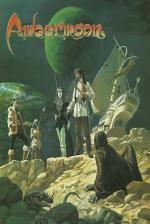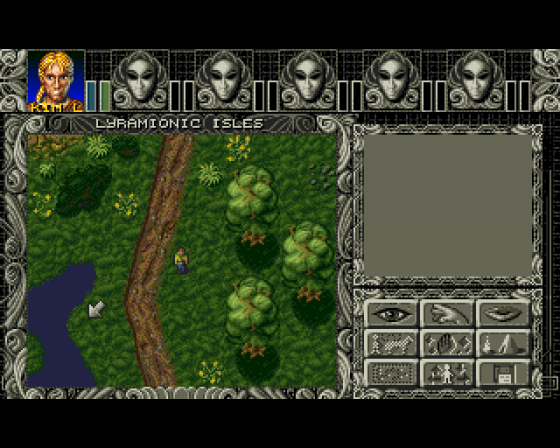
The One
 1st March 1995
1st March 1995
Categories: Review: Software
Author: Andy Nuttall
Publisher: Thalion
Machine: Amiga 500/600
Published in The One #78
When Simon was ed, there was a running joke about who would be lumbered with reviewing Ambermoon when it eventually arrived. Now that it has, Andy Nuttall, missing the opportunity to pass the buck to Matt, or Haz, finds himself strangely attached to the little bratwurst. Lucky, luck, luck...
Amber Moon (Thalion)
The circumstances surrounding the delivery of Ambermoon to the door of this office would have been downright hilarious, had the whole saga not been dragging on for so long. As it was, it certainly raised a smile amongst the less battle-hardened One crew. Amusing was the receiving of the Ambermoon disks, after more than a year's false promises of disks arriving the day later. Even more amusing was the rather large PR bloke for Thalion UK (and he'll probably kick me in for saying this) nervously twittering about the positive bits of his prized game, and not so much glossing over the bad bits as spreading on several coats of Dulux and an all-weather varnish for good measure. Most amusing, though, was that he really didn't need to bother. Ambermoon has been worth the wait.
It's an RPG. Rather, it's a huge RPG, bigger than any I've encountered, encompassing a massive range of different worlds and lands. The game is split into two distinctive parts; one isometric (top-down), and the other, a first-person 3D jobbie (like Legends Of Valour, Doom and Alien Breed 3D).
The isometric scenes come first, with your character wandering around villages, castles and mansions, Chaos Engine-style, talking to people and picking up clues, food and useful objects. And I recruiting other characters, of course, because you'll need them when you get to the dungeons, which are accessed from inside the buildings.

Because it was developed so long ago, I expected the 3D engine to be a lot less advanced than it actually is. There's not much in the way of colour, but then it's a dungeon, so there very rarely would be. Texture mapping stretches to the walls, ceiling and floor, and also to decorative and obstacular webs which hang around, needing a good prod with the old blade to step through. It's no Alien Breed 3D, but it's light years ahead of Death Mask or the now aged Legends Of Valour.
The scene is set, then, for a potentially excellent RPG, with the only major point against it being its age. In a reasonably crowded genre, made even more crowded since Ambermoon was finished with the release of Ishar 3 and Crystal Dragon, how will our little yellow friend compete?
The Verdict
Strange, that a year after it was completed and even released in Germany, Thalion should choose now for its release of Ambermoon. With Commodore's recent run of... well, bad luck, general sales of Amiga games aren't topping the history list; and those for specialised areas, like RPGs and stuff, can't be doing too well either.

But Ambermoon deserves more, because even almost two years after it was originally touted for release, it's actually rather a nice game. The dungeon-y bits are great; the 3D perspective works well in low detail on smaller machines, and some rather exquisite detail can be switched on if you have something more meaty to hand. The same can't be said, though, for the isometric-3D sections, which scroll laughably as you move your little adventurers around.
Great areas of the screen judder past as you struggle to shift about from one room to the other, spoiling what should be an exciting and spooky aspect of Ambermoon. Once you get used to the poor scrolling, though, the underlying game appears and reassures you that your money wasn't wasted.
The chit-chat with the villagers, and the more important conversations with people in the surrounding area are something that I didn't know was lacking in other RPGs, but I'll be watching out for them in future. A great deal of time has obviously been spent creating a believable plot, and a wealth of information which can be drawn on by talking to the right people. The sound effects add a good atmosphere, especially in the dungeons, and the puzzle-solving is pitched at a good level that's not patronising but not easy either.
And, when they're not moving, the graphics are excellent - remarkably reminiscent of those in Flink. Or unremarkably, when you learn that the same people were involved. Although I was looking forward to 'dissing' it somewhat, I have to concede that Ambermoon is - even after all this time - one of the best RPGs around.










